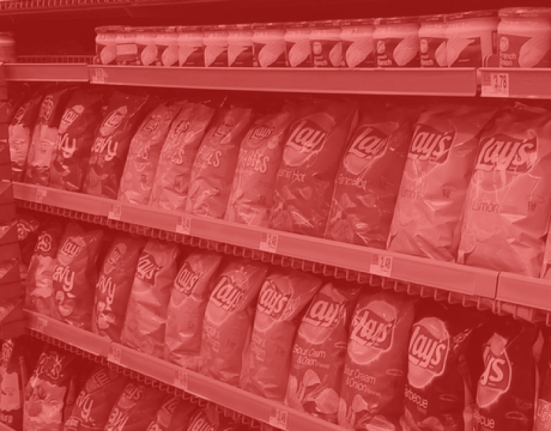Understanding the dynamics of your business is crucial for its success. One effective way to gain valuable insights is by measuring foot traffic, a metric that offers a wealth of information about your physical store’s performance and customer behavior.
Foot traffic data can be a game-changer for your business. It allows you to analyze peak shopping times, assess the effectiveness of your marketing campaigns, and understand how customers move within your store. By understanding these aspects, you can tailor your operations and marketing strategies to better meet your customers’ needs and drive sales.
Whether you’re a small business owner or a manager of a large retail establishment, you’ll find that foot traffic data can offer you the valuable insights needed to enhance your business operations and boost revenue.
The Importance of Measuring Foot Traffic
Understanding foot traffic—the number of people entering and exiting a particular physical space—can provide invaluable insights for businesses. Especially for brick-and-mortar retailers, measuring foot traffic can offer a snapshot of customer behaviors and shopping patterns. This data can help assess the success of marketing strategies, identify peak shopping times, and improve overall business strategies.
Foot traffic data can also be leveraged to optimize store layouts. By tracking customer movement within a store, retailers can strategically place products to increase visibility and sales. For instance, high-traffic areas might be best suited for promotional displays or impulse-buy items. Observing where customers linger and where they pass by can also inform decisions about product placement and store layouts.
Additionally, foot traffic analysis can provide a competitive edge in a crowded market. By comparing your foot traffic data with that of competitors, you can pinpoint your strengths and areas for improvement. This comparison can help identify opportunities, such as targeting times when competitor stores are busiest or tailoring promotions to attract their customers.
With foot traffic data, you can make informed decisions that drive sales, improve customer experience, and ultimately boost your bottom line.

Methods of Measuring Foot Traffic
There are several methods you can use to measure foot traffic, each having its own set of advantages and challenges.
- Manual Counting: Manual counting involves physically tallying the number of people entering a space. This method is cost-effective and straightforward. However, it can be labor-intensive and prone to human error, particularly in high-traffic areas.
- Video Analytics: This involves employing cameras to measure foot traffic. This method can provide more detailed data, including the direction of movement and duration of stay. However, it can be expensive to install and maintain, and privacy concerns may arise.
- Wi-Fi or Bluetooth Tracking: This method uses the signals from mobile devices to measure foot traffic. This can provide data on repeat visitors and dwell times, valuable insights for businesses. Yet, it requires visitors to have their Wi-Fi or Bluetooth enabled, which may not always be the case. Plus, similar to video analytics, privacy issues are a concern.
- Thermal Imaging: Thermal imaging sensors are another method. These sensors detect heat radiated from bodies, providing anonymous data and ensuring privacy. They’re also unaffected by lighting conditions, making them suitable for any environment. However, they could fail to differentiate between individuals in large groups, leading to undercounting.
Each method has its unique strengths and limitations. Manual counting is cost-effective but less accurate. Video analytics and Wi-Fi/Bluetooth tracking provide rich data but raise privacy issues. Thermal imaging ensures privacy and works in various conditions but may undercount in crowded situations. The choice depends on the particular requirements and constraints of each scenario.
Using Foot Traffic Data to Boost Business
Having an understanding of foot traffic is key to running a successful business. With the right footfall data, you can make more informed decisions about pricing strategies, marketing efforts, and other key aspects of your operations.
There are several ways you can use foot traffic data to boost your business, such as:
Understanding Your Customer Base
Knowing what kind of customers you attract can help you target your marketing efforts more effectively. Foot traffic data can provide insight into the demographics of your customer base, including age, gender, and other important factors.
Identifying High-Traffic Areas
With foot traffic data, you can pinpoint which areas of your business are most popular among customers. This can help you make more effective decisions about resource allocation, such as which areas of the store to invest in and which ones don’t need as much attention.
Analyzing Customer Behavior
Foot traffic data can also provide insight into how long customers spend in your store and what type of products they’re most interested in. Knowing this information can help you create better merchandising strategies and adjust your customer service approach to better meet the needs of customers.
Planning Promotions
Foot traffic data can also be used to plan promotional activities and sales in order to boost business. By analyzing trends in foot traffic, you can target certain promotions at the right times in order to maximize their effectiveness.
Staffing Decisions
Understanding foot traffic patterns can aid you in a number of areas, such as staffing decisions. By knowing the busiest times and days, you can allocate staff accordingly, ensuring better customer service and smoothing operations.
Monitoring Competitors
Finally, foot traffic data can also be used to monitor the performance of competitors in the retail space across different store locations. By monitoring their foot traffic numbers, you can get an idea of how successfully they attract customers and what strategies they’re using to do so.

Examples of Businesses Using Foot Traffic Data Effectively
There are several businesses who successfully use foot traffic data to their advantage when making strategies. Some examples of these include:
Starbucks
One of the leaders in using foot traffic data, Starbucks effectively analyzes pedestrian patterns to decide the perfect location for its new stores. They consider factors like proximity of retail stores to workplaces and residential areas, ensuring high visibility and accessibility to more customers.
Walmart
Walmart uses foot traffic data to create heat maps of the sales floor, understanding which areas attract the most customers. This helps them with product placement and store layout strategies.
The Power of Measuring Foot Traffic
Measuring foot traffic is an essential factor in understanding the success and growth of your business. It offers pivotal insights into customer behavior, store performance, and the impact of marketing strategies. When harnessed correctly, these insights can significantly boost your business’ bottom line.
Remember that the goal of measuring foot traffic isn’t just about numbers. It’s about interpreting those numbers to gain insights, understand customer behavior, and make strategic decisions. With the power of foot traffic data, you can make informed decisions that enhance customer experience, maximize your sales, and drive your business forward.
Visit Wiser.com today to learn more about store operations.














